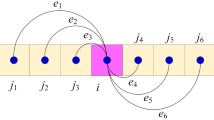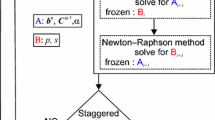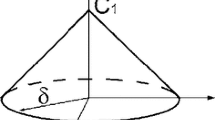Abstract
The effects of a transient thermal load on a cracked plate are studied experimentally using photothermoelasticity. The three crack configurations of an edge crack, an interior vertical crack and an interior crack inclined at 45 deg are analyzed. In each case, the initially heated plates are subjected to cooling along the edge, while the faces of the plate are either completely insulated, or noninsulated, or in a third case, they are covered with heated transparent Plexiglas plates. It is shown that among the three cracks, the largest transient maximum stress-intensity factor occurs for the edge crack. The inclined crack is subjected to a mixed-mode loading. Among the three cooling conditions, the most severe is the insulated faces case while the noninsulated is the least severe. The relative effect of the cooling conditions on the stress-intensity factors for the three crack types is different enough that the results with one cooling condition would not represent those of another one. A comparison of the experimental transient stress-intensity factors for the vertical crack cases to the finite-element results shows good agreement.
Similar content being viewed by others
References
Gurtman, G.A. andColao, A.A., “Photothermoelastic Investigation of Stresses Around a Hole in a Plate Subjected to Thermal Shock,” Experimental Mechanics,5,97–104 (1965).
Burger, C.P., “Thermal Modeling, Experimental Mechanics,15,340–342 (1975).
Burger, C.P., “Photoelastic Modeling of Thermal Stresses Caused by Thermal Shock, Experimental Mechanics,16,95–99 (1976).
Miskioglu, I., Gryzagorides, J. andBurger, C.P., “Material Properties in Thermal Stress Analysis,” Experimental Mechanics,21,295–301 (1981).
Miskioglu, I. andBurger, C.P., “Photothermoelastic Analysis of Transient Thermal Stresses,” Experimental Mechanics,22,89–95 (1982).
Miskioglu, I. andBurger, C.P., “Transient Thermal Stresses Around an Elliptical Hole,”J. Thermal Stresses,4,91–100 (1981).
Tsuji, M. andOde, M., “Investigation of Photothermoelasticity by Means of Heating,”J. Thermal Stresses,2,215–232 (1979).
Iwahi, T. andMayao, K., “Transient Thermal Stresses in a Strip with an Eccentric Hole, Experimental Mechanics,24,22–27 (1984).
Emery, A.F., Williams, J.A. andAvery, J., “Thermal Stress Concentration Caused by Structural Discontinuities,” Experimental Mechanics,9,558–564 (1969).
Nied, H.F., “Thermal Shock Fracture in an Edge-Cracked Plate,”J. Thermal Stresses,6,217–229, (1983).
Ting, V.C. andJacobs, H.R., “Stress Intensity Factors for Transient Thermal Loading of a Semi-Infinite Medium,”J. Thermal Stress,2,1–13 (1979).
Kokini, K., “On the Use of the Finite Element Method for the Solution of a Cracked Strip Under Thermal Shock,”Eng. Fract. Mech.,24,843–850 (1986).
Kokini, K., “Thermal Shock of a Cracked Strip: Effect of Temperature Dependent Material Properties,”Eng. Fract. Mech.,25,167–176 (1986).
Kassir, M.K., Phurkao, P.A. andBrandyopadhyay, K.K., “Some Transient Coupled Thermoelastic Crack Problems,”Theoretical and Appl. Fract. Mech.,6 (3),197–206 (1986).
Zhang, P. andBurger, C.P., “Transient Thermal Stress Intensity Factors of Short Edge Cracks with Equal Depth of Crack Tips,”Eng. Fract. Mech.,24,589–599 (1986).
Long, M.A., “A Photothermoelastic Study of Cracked Plates Subjected to Thermal Shock,” MS Thesis, Univ. of Pittsburgh (1986).
Doyle, J.F., Kamle, S. andTakezaki, J., “Error Analysis of Photoelasticity in Fracture Mechanics,” Experimental Mechanics,21,429–435 (1981).
Shaw, K.G. andHenshell, R.D., “Crack Tip Elements are Unnecessary,”Int. J. for Num. Methods in Eng.,9,495–507 (1975).
Barsoum, R.S., “On the Use of Isoparametric Finite Elements in Linear Fracture Mechanics,”Int. J. Num. Meth. in Eng.,10,25–37 (1976).
Author information
Authors and Affiliations
Rights and permissions
About this article
Cite this article
Kokini, K., Long, M.A. Transient thermal fracture of cracked plates. Experimental Mechanics 28, 373–381 (1988). https://doi.org/10.1007/BF02325179
Received:
Revised:
Issue Date:
DOI: https://doi.org/10.1007/BF02325179




